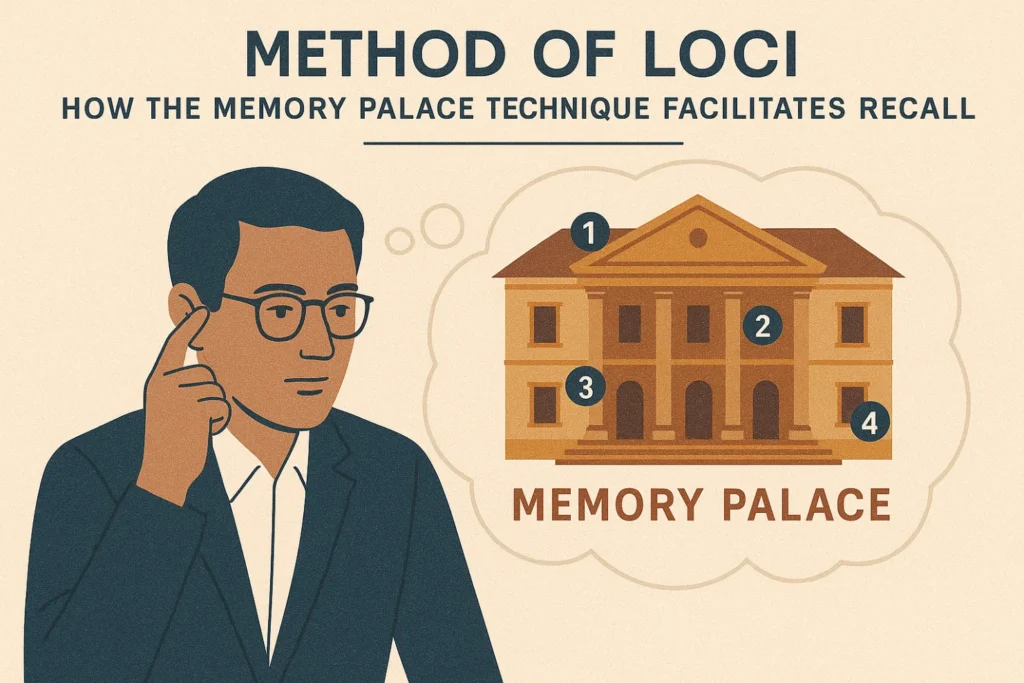Before digital reminders and note-taking software, academics used a clever way to recall a lot of information: the method of loci. This ancient Greek strategy for memorizing things is still one of the best ways to learn how to remember things today. Sherlock’s mind palace made it popular in contemporary society. It shows how clear pictures and ordered thoughts may help you remember things better. This old method gives you clarity, organization, and great memory for tests, presentations, or just getting things done every day.
Dive deeper with this related read—you’re just one click away from more insight!
How Does the Method of Loci Work?
What is the method of loci? For those curious, the answer is in the past. It started in ancient Greece and was improved and expanded by Roman speakers. It was made so that people might recall lengthy talks without having to write them down. It can be done by picturing information in a place you know, like your house, a road, or even a structure you make up. Every room or landmark is a “hook” where you may leave information, creating a memory palace that you can go back to anytime you need it.
Science explains its power in terms of spatial memory. There is an inherent ability in humans to remember places, an ability that results from survival. By correlating abstract information and spatial paths, this location-based memory technique utilizes our inherent navigation skills. Modern research even identifies the way that such strategies strengthen neural networks governing spatial memory training, enhancing accuracy of recall as well as mental organization.
The Sherlock’s Mind Palace in Modern Culture
The concept of Sherlock’s mind palace has captivated audiences worldwide with television portrayals of super sleuths who store clues in fantastical inner sanctums. Hyperbolic, naturally, for television drama, but essentially the concept remains true: structured memory by place and imagery. Fiction exaggerates speed and capability, but in application, the method relies on frequent practice and imagination. Thus, real application is based on rehearsal and customization, so it is possible to gain great encoding results.
How to Create Your Own Memory Palace
Creating a memory palace is simpler than you realize. The secret is to choose a location you know very well and chart it out as a fictional filing system. Here are the steps:
Choose your setting
Select a comfortable home, office, or even your favorite walking route.
- Plan the rooms
Picture yourself moving through the area in an orderly sequence.
- Assign things
Place each piece of fact or thought in a specific place, like a desk, bookshelf, or door.
- Implement mnemonic visualization
Translate the information into sensory images, sounds, or even bizarre occurrences that “stick” in memory.
- Rehearse the route
Recount your palace repeatedly in your mind to solidify associations.
This systematic process guarantees not only memorization but also sequential recall.
Practical Applications of the Method of Loci
The method of loci fits well with contemporary challenges. Students apply it for studying exams by transcribing formulas or dates in history to a preferred location. Experts use it for speeches to deliver without notes. It’s handy even for mundane tasks, like memorizing shopping lists or timetables.
Most importantly, this technique addresses short-term and long-term goals. Quick practice can address specific lists, and multiple visits cement knowledge for long-term recall. Over time, the palace has the potential to expand to be an extended lifetime source of information organization.
The loci method shows that ancient knowledge has the potential to thrive today. With a mix of familiar locations, sensory imagery, and sequential practice, anyone can create a mental storehouse. If you’re fascinated by this ancient Greek memorization method or simply want to enhance your study methods, this age-old technique shows us that the mind is more capable than we have come to realize.
Don’t miss our spotlight piece—specially picked for your reading pleasure!






